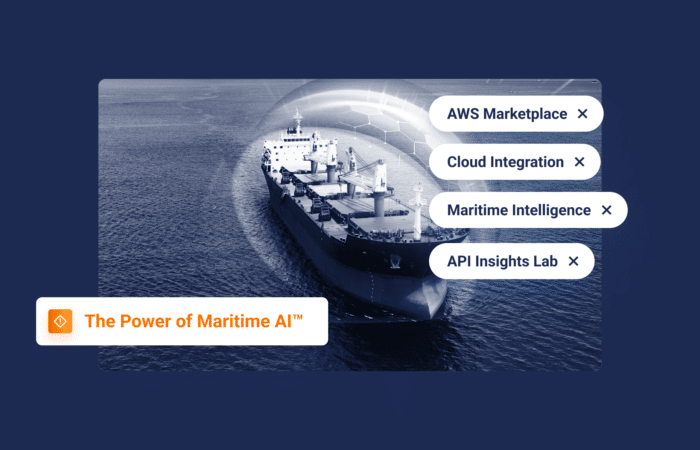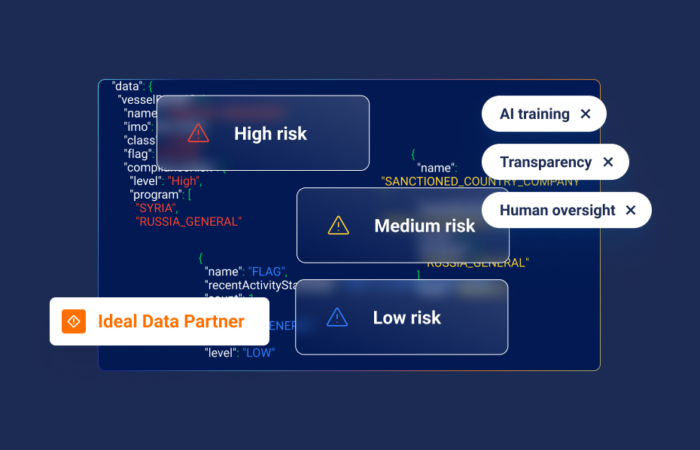Going Beyond the Buzz of AI

What’s inside?
By Benny Keinan, Vice President of R&D, Windward
“AI had a ‘wow’ moment” in November with the release of ChatGPT, said Sandhya Venkatachalam, a partner at the prominent VC firm Khosla Ventures, which was an early investor in OpenAI, to Vox. She compared generative AI’s progress to the emergence of the internet.
“I think this is absolutely on the same order of magnitude.”
The mass recognition of AI’s power is an overdue and positive development, but how can those of us in the maritime industry, which has traditionally been a little slow to adopt new technologies, help organizations go beyond the buzz to spur mass adoption in a way that will significantly benefit a diverse group of organizations?
One way to help maritime organizations overcome their fears is to remind the decision-makers that they are already benefiting from AI all the time…at home. When you sit down to watch Netflix, do you want to waste time manually scrolling through their entire catalog of thousands of TV shows and movies? We benefit from Netflix’s machine learning algorithms, which analyze viewer data and make personalized recommendations that we are likely to enjoy (personally, I could do with fewer recommendations for Scott Adkins movies, but that’s a different story) .
Voice assistants – such as Amazon’s Alexa, Apple’s Siri, or Google Assistant – use natural language processing (NLP) to understand what you’re saying and respond in a way that is helpful. They are already answering your questions, playing your music, controlling your smart home devices, and more.
Why not also benefit at work?
Maritime AI™ sorts through huge amounts of data to offer accurate and personalized recommendations that save both time and money. For instance, it is notoriously difficult to accurately determine vessel ETA for ocean freight vessels: just a few obvious factors include the changing weather, port congestion worldwide, the type of ship and its cargo, potential transshipments, etc. Maritime AI™ takes into account hundreds of millions of data points to immediately produce an accurate number.
It’s a similar story when it comes to charterers understanding vessels’ fuel consumption patterns: they can try to conduct thorough reviews based on a seemingly endless series of factors, or immediately receive a simple and accurate list of vessels ranked by fuel consumption efficiency. The same is true for identifying and monitoring deceptive shipping practices (DSPs) and many other facets throughout the maritime ecosystem.
Important Factor for Going Beyond the Buzz
Unlike in our personal lives, simply receiving an answer from AI is often not sufficient in the high stakes maritime sphere. Platform users want to understand why a vessel was flagged, or ocean freight containers were delayed, so they can confidently explain the situation to their superiors and/or customers, and plan to avoid future disturbances.
In the maritime supply chain ecosystem, for instance, over 40 percent of shipments are delayed. Customers of freight forwarders, importers and exporters, and beneficial cargo owners (BCOs) expect and demand answers as to why. They want explainability.
Windward’s new “Reason for Delay” technology combines the best of both worlds: users receive a bottom line answer regarding containers’ arrival, but they can also understand why it is delayed. This explainability empowers them to see if they can mitigate the delay and also boosts customer satisfaction, by facilitating transparent and informed conversation.
Separating the Wheat from the Chaff
Seeing the world buzzing about AI is rewarding for those of us in the maritime industry who have been at the forefront of pioneering this technology. Windward was first in the game: we incorporated machine learning over eight years ago and we have been using AI models for over four years. We have built up trust and demonstrated proven results to the industry leaders we serve.
What should you look for when considering AI solutions?
Comprehensive data infrastructure is important. Windward possesses over a decade of maritime data. Generic AI vendors cannot offer that foundation. You should also consider both the number of AI models a vendor offers and how long it takes to define and release new models. The maritime industry is complex and ever-changing: having only a few models is insufficient and Russia’s invasion of Ukraine was a reminder of how quickly the global maritime ecosystem can change in an instant – so the quick development of solutions and models is critical.
Interrelated models must be integrated. For instance, Windward’s risk model is enhanced by the data it pulls from our ship-to-ship model, because ship-to-ship engagements are often important indicators for various deceptive shipping practices (DSPs), such as oil smuggling.
Lastly, if you are worried about AI adoption, there is no need to blindly trust vendors. Windward is currently engaged in a three-month test with a global supply chain leader. We are confident that the organization’s decision-makers will understand that using Maritime AI™ is not only as intuitive and time-saving as surfing Netflix, but will also boost customer satisfaction, help them streamline operations and cut costs, and offer many more benefits.












